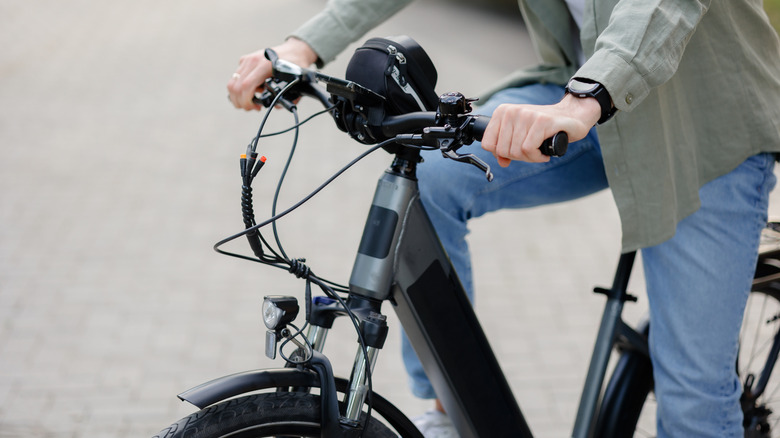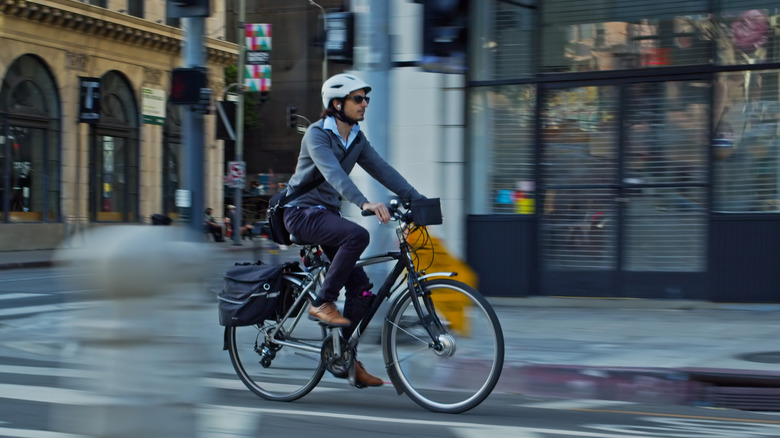Connecticut Is Cracking Down On E-Bike Laws For All Bike Classes And Ages
The bicycle has a long and winding history, with no clear answer on who definitively invented the modern apparatus. The design that most closely resembles what we ride today is typically attributed to John Kemp Starley, whose 1885 model boasted two wheels of equal size, gears, and a chain. The underlying blueprint of bicycles remained mostly the same for decades, until the rise of the electric bike, or e-bike, in the 1990s.
Despite some visual similarities, e-bikes and electric motorcycles are very different – e-bikes have less power and still require the user to pedal. The modern e-bike was invented in Switzerland and featured pedal-assist technology. Their popularity in the U.S. burgeoned in 2020 when COVID-19 meant that many people weren't comfortable taking public transportation in cities. They're a great choice for people of all fitness levels, and allow the user to commute with minimal effort in a more cost-effective manner. Kids enjoy them because they can tackle tougher rides and stray a bit further from home.
This explosion in popularity has unfortunately resulted in more accidents, with falls from e-bikes often resulting in bone fractures. According to a spokesperson for the American Academy of Orthopedic Surgeons (AAOS), more than 10% of injured e-bike riders need hospitalization. To help keep both adults and children safe, some states, including Connecticut, are more tightly regulating this modern mode of transport. Its new rules on e-bikes took effect on October 1, 2025, and affect riders of all ages.
Connecticut's new rules
Connecticut's new laws impact what types of bikes are allowed and even where Connecticuters can take them. For a bike to be considered an e-bike and not a motor-driven cycle, it must have working foot pedals and a motor putting out less than 750 watts. The state has categorized e-bikes into three categories. Class 1 includes bikes with pedal-assist that can reach speeds up to 20 mph, and Class 2 includes bikes with pedal-assist or a throttle, also with a speed limit of 20 mph. Users must be 16 years of age or older to operate Class 3 e-bikes, which cannot go faster than 28 mph.
All riders must wear a helmet, no matter how old they are, and e-bikes are not allowed on sidewalks or limited access highways. Users must also follow all road laws, just like they would if they were driving a car, and if they take the bike on a road with a speed limit that is higher than the e-bike's top speed, they must stay on the shoulder or, in the case of a multi-lane road, in the right-hand lane.
Following road laws also means properly equipping the e-bike with a front light and a rear reflector. The AAOS recommends that riders wear bright clothing and avoid using a phone or headphones while riding. Proper footwear is also a good idea, as is familiarizing yourself with the new laws and regulations before you purchase a new e-bike or head out for a ride.

